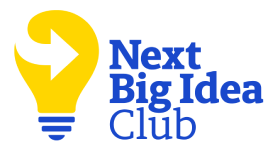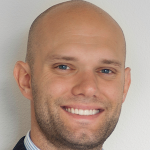Below, Paul Leonardi shares five key insights from his new book, Digital Exhaustion: Simple Rules for Reclaiming Your Life.
Paul is a professor of technology management at the University of California, Santa Barbara. He is a frequent consultant and speaker to a wide range of companies, such as Google, Microsoft, YouTube, McKinsey, GM, and Fidelity. He is also a contributor to the Harvard Business Review.
What’s the big idea?
We are the first generation in human history to carry the entire world’s information, connections, and distractions in our pockets. It’s no wonder that the technology once promised to make life easier now leaves us tired and overwhelmed. Paul Leonardi refers to this as cognitive and emotional weariness, calling it digital exhaustion. But it doesn’t have to be this way. With intention, we can turn our devices from sources of drain into tools of connection, empowerment, and creativity.
1. Exhaustion isn’t weakness—it’s physics.
Maya wakes up at 5:50 AM to her phone buzzing. Within seconds, she is scrolling on Instagram. A news alert pops up—she clicks it. Three text messages arrive—she switches to a different app. Her partner tries to talk to her, but she doesn’t hear him because now she’s checking WhatsApp. By the time Maya gets out of bed, she has made dozens of micro-decisions and context switches. Her brain has already started burning through its limited energy reserves, and she hasn’t even had coffee yet. This routine is a growing epidemic.
In my research tracking over 12,000 workers across 12 countries for two decades, I found something startling. In 2002, the average digital exhaustion score was 2.6 out of 6. By 2022, it had skyrocketed to 5.5. My nine-year-old daughter looked at the graph and said, “It looks like a snake about to strike.” She was right. And that snake has struck.
Think about a phone battery. When it’s new, you charge it overnight, and it lasts all day. But after thousands of charge cycles, it drains faster and faster. Eventually, it barely holds power at all. Our brains work the same way. Every notification, message, and screen switch drains our cognitive battery.
Take Andi, a product manager I worked with at a software company. She told me, “I feel like my brain is a phone battery that just doesn’t hold a charge anymore. I used to be sharp all day. Now by 2 PM, I’m staring at my screen, unable to focus on even simple tasks.”
Andi wasn’t weak or lazy. She was experiencing what neuroscientists call cognitive depletion. Every time you switch your attention, blood rushes to your prefrontal cortex. Your brain sounds a two-tone alarm, searches for the right neurons to handle the new task, then activates them. This process, called rule activation, happens in tenths of a second. Each switch burns precious metabolic energy.
“Every notification, message, and screen switch drains our cognitive battery.”
Your brain accounts for only 2 percent of your body weight, but consumes approximately 20 percent of your daily calories. Most of that energy is devoted to keeping your body running: breathing, heartbeat, and temperature regulation. Only a tiny reserve is left for active thinking. As neurologist Richard Cytowic told me, “The brain’s reserve margins are slim and quickly eaten up by constantly shifting attention.”
I tracked 20 teams at three Fortune 500 companies and found that the average knowledge worker toggles between apps and websites 1,200 times per day. That’s 1,200 energy-draining attention switches. If each switch takes just two seconds, that’s 40 minutes a day just transitioning between tools. But the real cost isn’t time, it’s the cumulative exhaustion from all that switching.
Since ancient Greece, writers have described exhaustion as the depletion of a finite resource. Today, that resource is attention. Just like muscles grow sore from physical labor, minds weaken when overtaxed by constant switching, scrolling, and interpreting. The problem is that our bodies are great at signaling physical fatigue—sore muscles, aching joints—but our brains rarely wave a red flag. Instead, exhaustion sneaks up on us. We don’t realize we’ve crossed the line until we’re already depleted.
Stop blaming yourself. If you feel exhausted by digital tools, you’re not failing. It’s the inevitable physics of finite energy colliding with infinite digital demands.
2. Tools multiply faster than our capacity.
We often assume the solution to digital overload is better tools. “If I just had the right app,” we think, “everything would be easier.” But the more tools we adopt, the more fragmented our lives become.
Consider HealthCo, a global company I studied. When I asked employees to list their digital tools, I found that they weren’t just using email anymore. They had Slack for chat, Zoom for meetings, Jira for project management, Salesforce for customers, SharePoint for documents, Teams for cross-department updates, plus dozens of specialized tools. Each promised to make work easier. Together? They created chaos.
One employee, Marcus, told me, “I spend more time figuring out where to respond than actually responding. Did that question come through email? Was it on Slack? Did someone tag me in Jira? I’m constantly hunting for conversations across platforms.”
My research revealed that the average knowledge worker spends 57 minutes per day switching between applications. They also spend 30 minutes daily deciding which tool to use for each task. Should I message on Slack or email? Should I put this in Notion or Google Docs? These micro-decisions seem trivial, but when you’re making them 1,200 times a day, they create what psychologists call decision fatigue.
Let me tell you about Shireen, a marketing specialist who listed 36 different digital tools she used daily. Everything from Adobe Illustrator to TikTok to her banking app. After our conversation, she looked at her list and said, “Oh God. That exhausts me just looking at it.”
“The average knowledge worker spends 57 minutes per day switching between applications.”
Shireen decided to try an experiment: she cut her tools in half. She identified tools that were redundant (using both Alexa and Siri), tools she barely used (Evernote for notes when she had Word), and tools that weren’t essential (three different social media apps for posting the same content). Six months later, her exhaustion score dropped by 40 percent. She told me, “I thought I’d miss those tools, but instead I feel liberated. It’s like I decluttered my digital life.”
Technology expands faster than our cognitive capacity to manage it. We’re running software from 2024 on hardware (our brains) that hasn’t been upgraded in 300,000 years. Exhaustion isn’t built from volume alone, but from fragmentation across too many platforms.
3. Interpretation is more draining than information.
It’s not the flood of emails and notifications themselves that exhaust us most. It’s what I call inference fatigue, meaning the mental work of constantly interpreting ambiguous digital communication.
Take Aaliyah, who runs a nonprofit in Georgia. Her inbox was overwhelming, but what really wore her down was the constant interpretation. She told me, “I spend so much mental energy trying to decode messages. Why did my colleague only reply with ‘ok’—are they annoyed? Why hasn’t the donor responded—did I offend them? What does that emoji really mean? It’s exhausting trying to read between the lines all day long.”
Digital communication strips away crucial context: tone of voice, body language, facial expressions. Our brains work overtime to fill in the gaps. This creates what neuroscientists Susan Fiske and Shelley Taylor call controlled processing, or slow, deliberate, effortful thinking that demands huge amounts of cognitive resources.
Researchers examined college students responding to ambiguous Facebook posts. Not only did students feel mentally exhausted trying to figure out if someone was genuinely depressed or just seeking attention, but the emotional toll of arriving at these conclusions left them feeling depleted and dispirited.
Think about your own digital life. How often do you reread a text, worrying about its tone? How many times have you analyzed a brief email response, wondering if the sender is upset? These micro-interpretations pile up until we’re mentally drained.
In the analog world, a face-to-face conversation offers dozens of cues that help us interpret quickly and accurately. A slight smile, a furrowed brow, the speed of response—all provide instant context. In the digital world, every interaction becomes a puzzle to solve.
“These micro-interpretations pile up until we’re mentally drained.”
But it gets even more complex. We’re not just interpreting others; we’re also constantly evaluating ourselves through digital mirrors. Take Zoom fatigue. Jeremy Bailenson at Stanford found that seeing ourselves on video calls creates unprecedented self-scrutiny. As he put it, “Imagine in the physical workplace, for the entirety of an eight-hour workday, an assistant followed you around with a handheld mirror.” That’s essentially what happens on Zoom.
One of my students, Xiao, confessed to me, “When you’re teaching on Zoom, I’m constantly managing how I appear. Am I nodding enough to show I’m engaged? Can you see I’m taking notes? I was so busy thinking about how I looked to you that I missed half of what you were saying.” Exhaustion isn’t just about too much input. It’s about the invisible, constant work of decoding others’ meanings and managing our own digital presence.
4. Boundaries create energy, not limits.
We tend to think of boundaries as walls that keep us from being responsive and connected. But my research shows the opposite: boundaries create energy.
Consider Vicente, a high school teacher and soccer coach I studied. He made one simple change: he turned off all notifications during soccer practice. No emails, no texts, no pings for two hours each afternoon.
“At first, I was anxious,” Vicente told me. “What if I missed something important? But then something magical happened. I was fully present with my players. I could see their technique improving, and have real conversations with them. And when I checked my phone after practice, I had more energy to deal with messages because I wasn’t depleted from constant interruptions.”
Boundaries are like fences around your attention. They don’t shrink your world; they protect the space where energy regenerates. In one study I conducted with companies using internal social media platforms like Jive, employees who set specific times to check messages improved their ability to find expertise by 31 percent and identify key contacts by 88 percent. Why? Because when they weren’t constantly interrupted, they could pay attention to patterns in communication and learn who knew what in their organization.
But many of us resist boundaries. We worry we’ll miss something critical or appear unresponsive. Jed, an investment banker I interviewed, prided himself on responding to every message within minutes. “I’m dependable,” he told me. “People know they can count on me for fast responses.”
“We worry we’ll miss something critical or appear unresponsive.”
So, I interviewed his colleagues. Most didn’t even notice his quick responses. His boss actually wished he’d slow down: “Sometimes Jed responds too quickly without thinking things through. I’d prefer more thoughtful responses, even if they take longer.” Jed was exhausting himself to maintain a reputation that didn’t exist. His always-on approach scored him a five out of six on the exhaustion scale, while providing no real benefit to his colleagues.
Boundaries are about saying “yes” to energy, focus, and genuine connection. When we protect our attention, we create energy.
5. AI could save us… or exhaust us completely.
Let me present two scenarios based on my current research with ten companies that are implementing AI.
- AI as liberator.
Imagine an AI assistant that truly understands your work patterns. It filters your inbox, showing you only the three decisions that need your input today. It summarizes those lengthy Slack threads into two sentences of relevant information. It drafts routine responses that sound like you, leaving you free to focus on creative, meaningful work.
I’m seeing glimpses of this at companies like HealthCo, where junior lawyers use AI to review contracts. Tasks that took days now take hours. They use their freed-up time to do higher-level work: strategic thinking, relationship building, creative problem-solving.
- AI as amplifier of exhaustion.
My students recently used ChatGPT to write thank-you notes to a guest speaker. The AI expanded their brief thoughts into lengthy, formulaic essays. The speaker’s response? “If you’d sent me all these AI-expanded notes, I would’ve just fed them back into ChatGPT to summarize them.” Think about the absurdity: We’re using AI to expand our content, forcing recipients to use AI to compress it back down. It’s an exhaustion amplification loop.
I’m already seeing this at scale. One executive told me 70 percent of internal documents at his company are now AI-generated—longer, more verbose, but not more valuable. As he put it, “We’re drowning in synthetic content that no human actually wants to read.”
The scariest part? AI is getting better at keeping us hooked. In one study, personalized messages crafted by ChatGPT were remarkably effective at persuading people. AI can recognize our emotional states better than many humans, and it never gets tired of talking to us. A company I consulted for developed an AI sales assistant specifically designed to keep customers on the phone longer. As their product chief told me, “Our AI figures out the perfect next thing to say to maintain engagement. It’s like a conversation that never wants to end.”
If we design and use AI thoughtfully, it can reduce exhaustion by handling routine tasks and freeing us for meaningful work. But if we let it run wild, it will accelerate our exhaustion to unprecedented levels. AI is either the beginning of the end of digital exhaustion—or exhaustion’s final evolution. The choice is ours.
Enjoy our full library of Book Bites—read by the authors!—in the Next Big Idea App:










